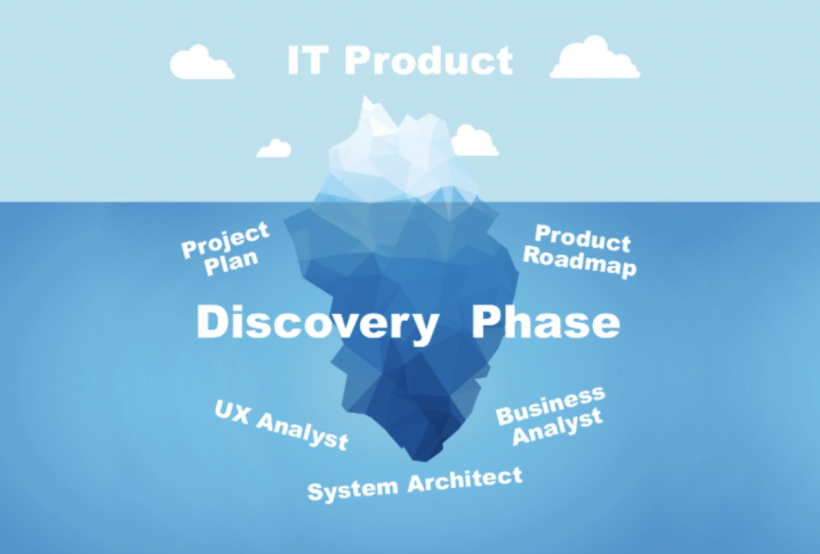When planning to develop an IT solution, evaluating costs and forecasting risks could be a real lifesaver. The discovery stage serves as a proven technique to mitigate potential risks, cut research and development costs, and build an effective roadmap in order to reach the best possible results and successfully achieve the initially set business goals.
Purpose of Discovery Activities
Nowadays entrepreneurs still hesitate to take this process seriously. They ask themselves why there are such services are offered, and what is the actual need for it. Here are the key reasons why startup owners shall conduct the discovery:
- To clearly define business goals, as well as future product vision;
- To create the architecture of the product to reach the expected goals;
- To optimize the expenditure on product development;
- To reduce potential risks;
- To establish an explicit development roadmap.
What Shall Happen During the Discovery Process
For the majority of business owners, those activities might seem to be an unfathomable mystery that could be perceived as something too complex and profound. In fact, the software development discovery phase implies clear and understandable actions. Let’s quickly enumerate the key ones:
- Getting familiar with the customer and the business concept;
- Exploring current business processes and outlining the future product idea;
- Determining final customers;
- Examining existing competitors and carrying out comprehensive market analysis;
- Searching for the most optimal solutions to relevant issues;
- Evaluating the overall scope;
- Establishing the priorities, as well as deadlines;
- Choosing specialists and assigning their roles;
- Obtaining thorough startup PRD together with the proposals;
- Striking a deal for the discovery stage.
How to Effectively Conduct the Discovery Phase
Basically, the discovery process workflow is largely subject to the approach a development company prefers. In fact, an agile discovery is the best technique when it comes to web and mobile software development, so we would distinguish the following key steps.
#1. Data collection and user stories creation
There are a few aspects here that must be taken care of. First of all, one shall figure out who the targeted audience specifically is. In order to find out as many details as possible, you shall ask diverse questions, say, who your potential clients are, what problems they’re struggling with, how your future solution will help them, etc. The answers you’ll get shall help you better understand who your service is for.
Moreover, it’s critical to get in touch with stakeholders since upper management and other people involved shall participate in the project discussions. Market research won’t be superfluous either. Being fundamental for software development, market analysis brings value to the process and ensures its further success.
Also, your future competitors shall not be left out. You need to figure out what they offer and how they manage to attract customers. And, of course, the discovery team will create users stories.
#2. Idea framing
We would recommend you take advantage of Mind mapping for this purpose. The given approach represents a kind of visualization used to structure the data obtained to figure out what solution will be perfectly suited for specific software development.
#3. Elaborating high-level requirements
Now it’s time to get down to product requirement documentation (PRD). This document shall reveal all tech specifications to ensure the proper functioning of the software. Basically, PRD enumerates all functionality of the future product.
#4. Prototyping
Prototypes are made to show how the finalized digital solution shall look and work. It helps prove the concept to make sure the initial idea is feasible. During this stage, it’s better to validate functional suppositions, as well as define possible tech blockers.
#5. Testing
Prototype tests are mandatory to make sure the solution works smoothly and bug-free, otherwise, possible issues will negatively affect revenue and business reputation. Before the final version of the software is built and launched, the development agency must ensure that it meets the requirements.
#6. Development preparation
As soon as the scope of work is defined, it’s time to get ready for the development itself, meaning, to decide on tech slack, take care of code audit, determine the architecture. All of the mentioned details shall serve for you to understand the entire development process and its nuances to realize the concept in the best possible way.
#7. Roadmap creation
Before you start the development you need to make a blueprint of all activities involved. A roadmap helps to clearly determine the timeframes, distinguish the milestones, and build a detailed plan to follow. Your roadmap will also serve to estimate time expenses, as well as the budget required.
Laila Azzahra is a professional writer and blogger that loves to write about technology, business, entertainment, science, and health.
